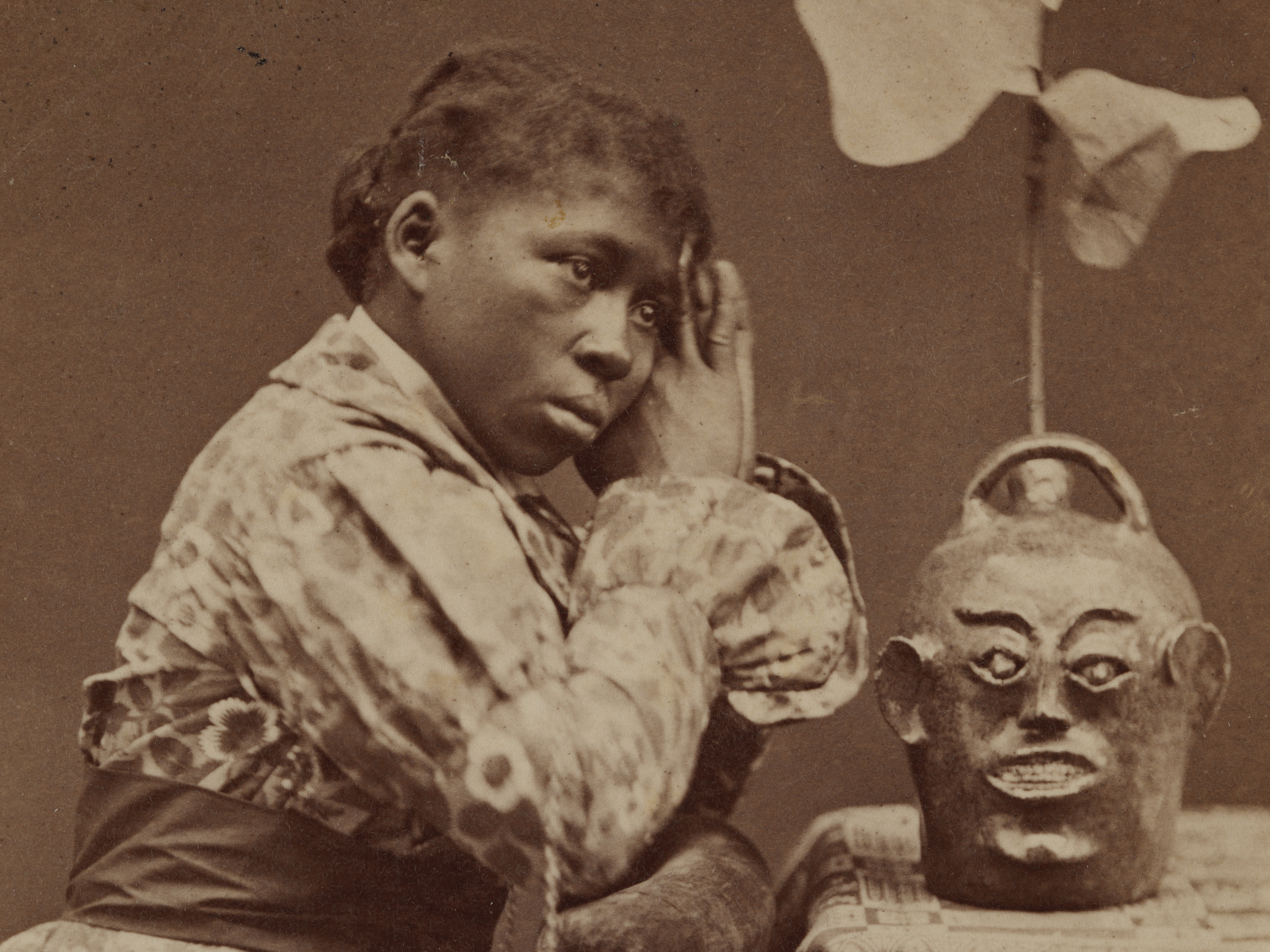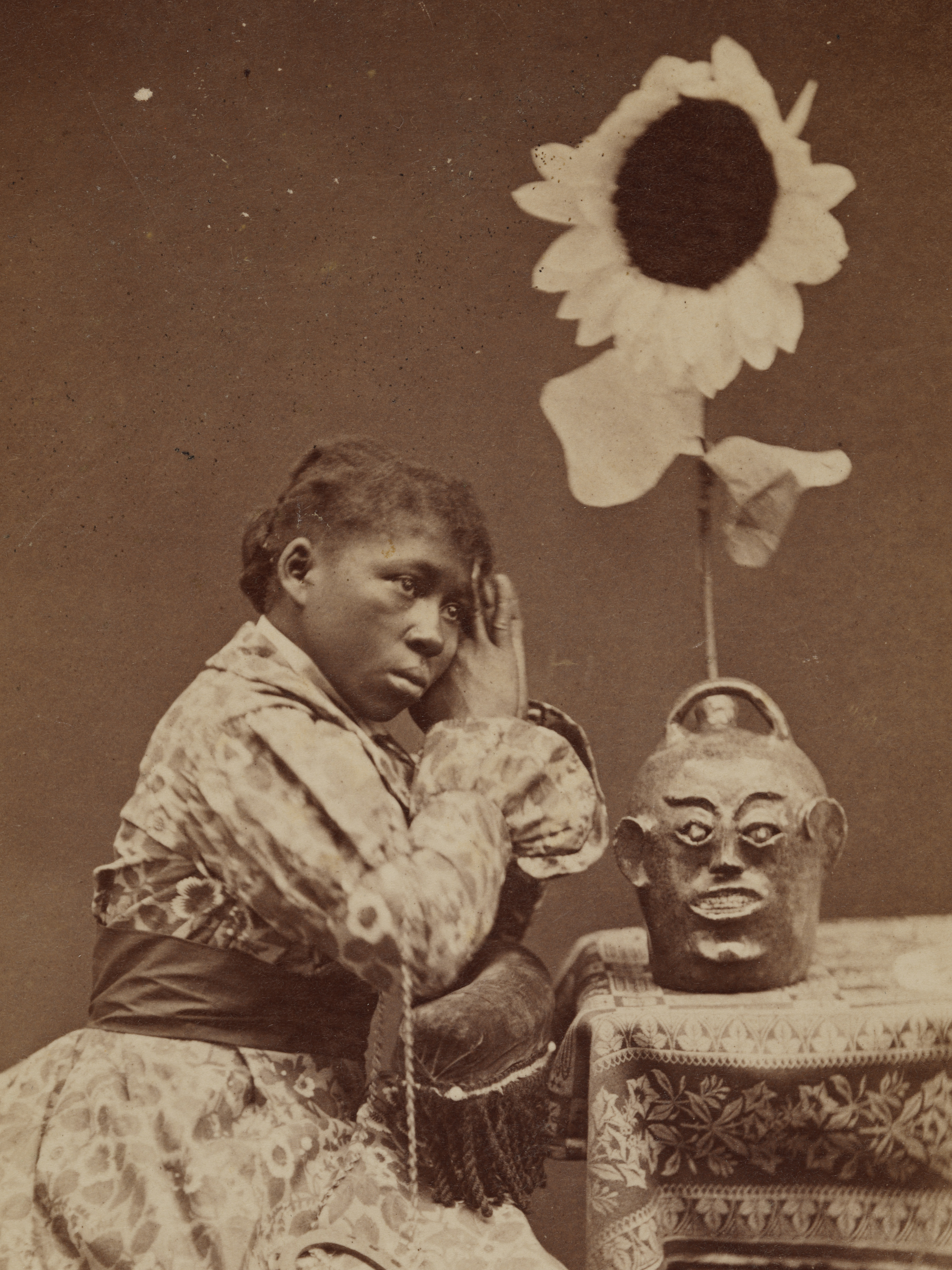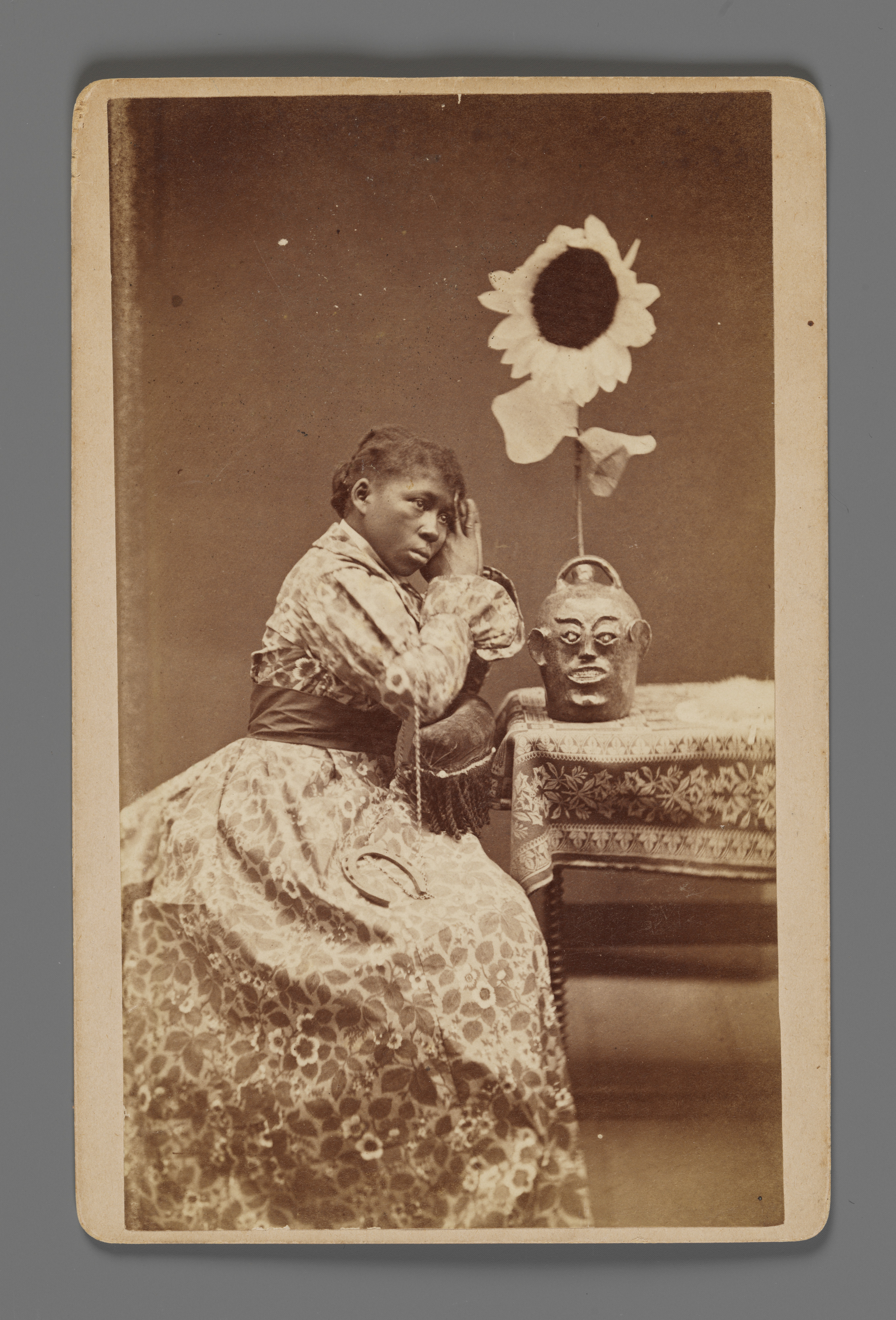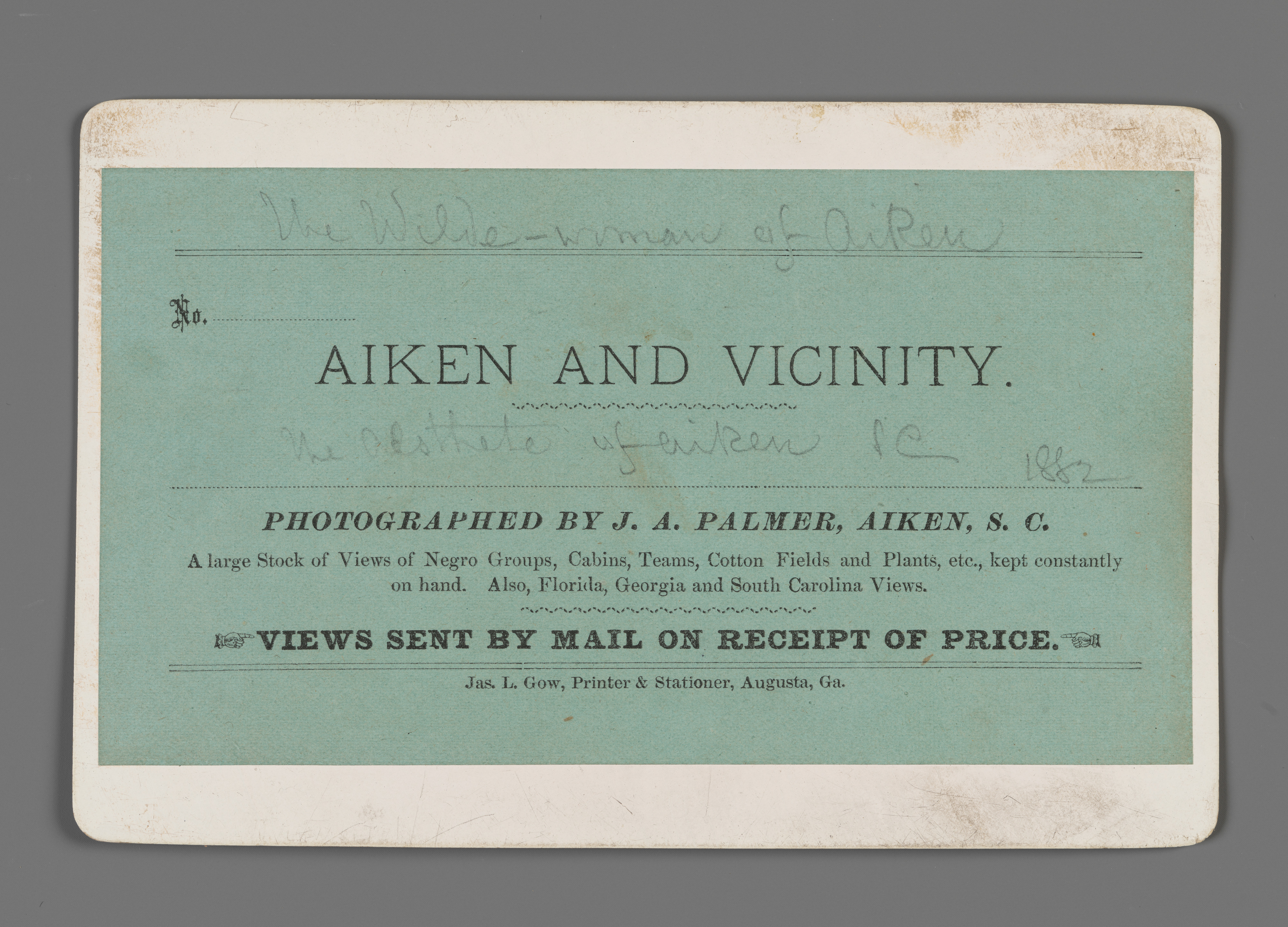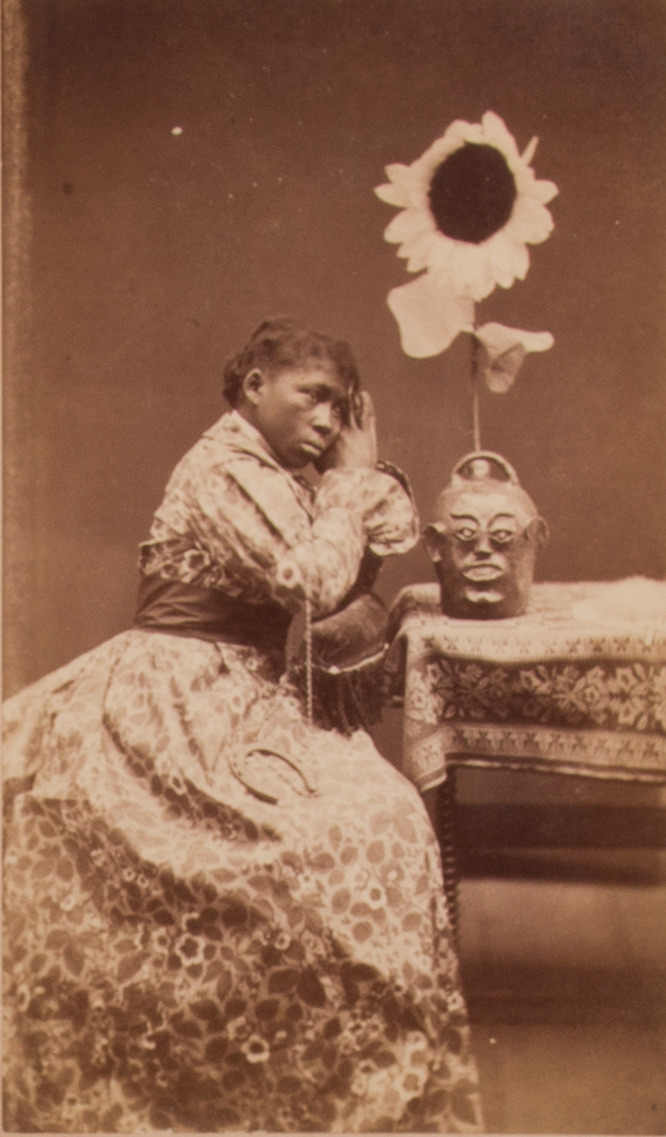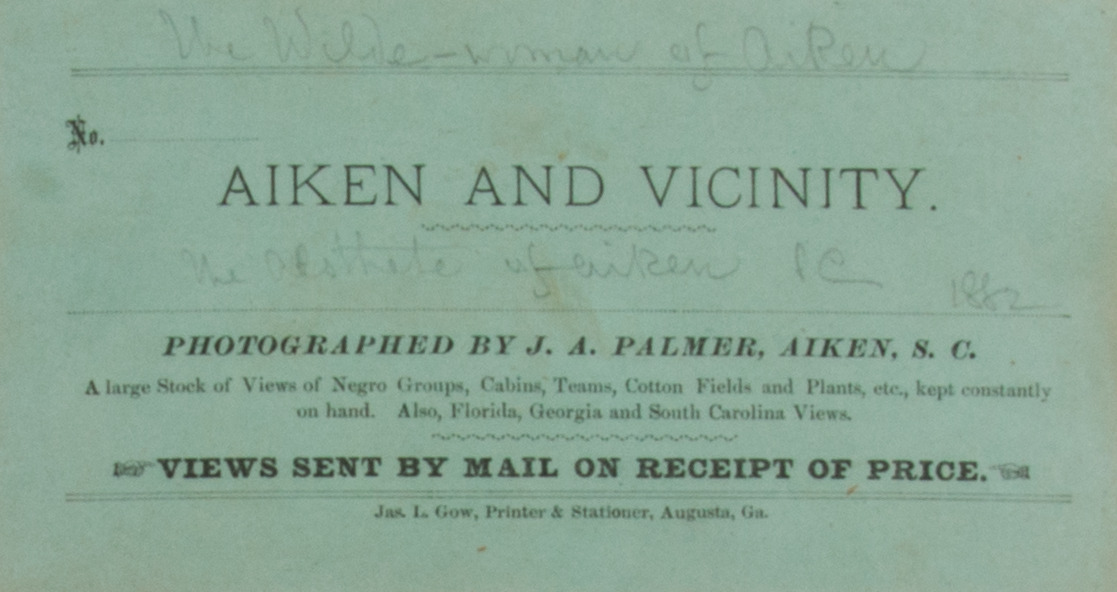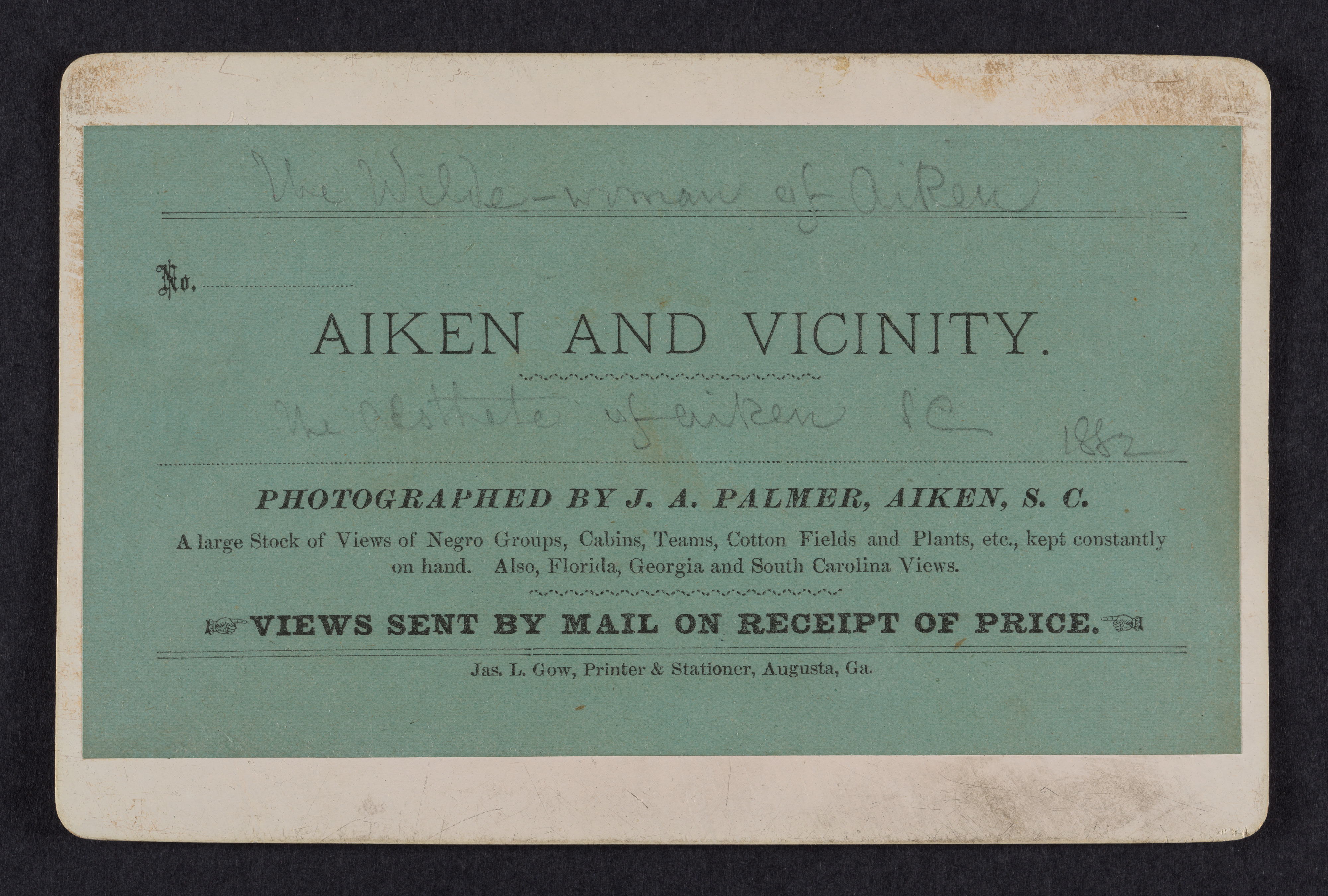"The Wilde Woman of Aiken," from the "Aiken and Vicinity" series
James A. Palmer Irish-American
Not on view
This racially and culturally offensive photograph captures the attitudes and stereotypes prevalent in America at the end of the 19th century. Likely made in response to Oscar Wilde’s aesthetic ideals of beauty and "Art for Art’s sake" philosophy, the image depicts an African American woman seated at a table with an Edgefield face jug displaying a large sunflower and a calla lily. It appears to have been taken at the same time as "An Aesthetic Darkey," another photograph from the same "Aiken and Vicinity" series, whose composition and title were modeled on William Holbrook Beard’s woodcut engraving entitled "The Aesthetic Monkey," featured on the January 28, 1882 cover of Harper’s Weekly, itself a satire of Oscar Wilde. The Irish-born poet and playwright Wilde traveled to the United States and Canada for an 11-month lecture tour in 1882, and garnered much attention and coverage in local press along the way. Notably, Wilde made three lecture stops in Georgia in early July 1882, perhaps inspiring Palmer’s "The Wilde Woman of Aiken" and "An Aesthetic Darkey."
Due to rights restrictions, this image cannot be enlarged, viewed at full screen, or downloaded.
This artwork is meant to be viewed from right to left. Scroll left to view more.


